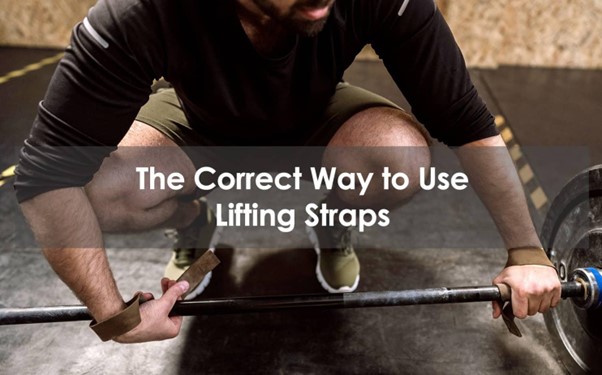Do you want to gain strength quickly but need help getting the results you’re looking for? Weightlifting straps can provide a powerful solution by giving you an extra lift in your weight training.
By holding heavier weights with a firm grip and stabilizing force, weight-lifting straps enable users to challenge their muscles in ways that free-handed lifting does not — helping create greater muscle gains and improved training efficiency.
As easy as they may look from the outside, there’s quite a bit of technical knowledge required to use straps for weight lifting during fitness exercises properly.
In this blog post, we’ll cover everything you need to know about using them correctly — including how they work, when they should be deployed during exercises, and other helpful tips for using these helper tools effectively!
What Are Weightlifting Straps?
Weightlifting straps are equipment weightlifters use to increase their grip strength while performing exercises. These straps are often constructed from heavy-duty fabric or synthetic leather and are designed to loop around the wrist with a looped extension that wraps around the barbell.
This design helps secure the hand and ensures users keep a firm grip on the weights even through heavy sets and reps, allowing them to increase their intensity without worrying about dropping the weights. Straps for weight lifting allow athletes to focus more on their form while lifting than their grip, making them essential equipment for improving their workouts.
Types of Weightlifting Strap
Several weightlifting straps are available, each designed to provide additional support, grip, and comfort. The most classic type is the traditional cotton strap; these are strong, comfortable, and highly adjustable.
They can be looped in a few different ways – including the figure 8 method – to help the athlete achieve maximum levels of grip and support. If a heavier-duty strap is what you’re after, then neoprene or leather options may be more appropriate for your needs.
Both provide superior durability and strength even in the most intense workouts, with slightly thicker grips to ensure that your hands don’t slip during lifts. Whether you’re an expert or just starting with a barbell for the first time, there’s bound to be a weightlifting strap explicitly tailored to your training needs.
Benefits of Using Weightlifting Straps
Now that we know the use of weight-lifting straps, let’s look at their benefits. Some benefits include the following:
Increased Grip Strength
One of the benefits of using weight-lifting straps is that they can help increase grip strength. When you use straps, your hands are not required to grip the bar as tightly, so your forearm and hand muscles do not have to work as hard.
It can help increase grip strength over time as your muscles become stronger using the straps.
Improved Lifting Technique
Another benefit of weightlifting straps is that they can help improve your lifting technique. When your hands are not required to grip the bar as tightly, you can focus more on using the proper lifting technique. It can help you lift more weight safely and effectively.
Reduced Risk of Injury
Weightlifting straps can help reduce the risk of injury, especially while lifting heavier weights. When your hands are not required to grip the bar as tightly, they are less likely to slip or lose their grip, which can lead to injuries such as strains or sprains.
Increased Weightlifting Performance
Finally, weightlifting straps can also help increase your overall weight-lifting performance. When your hands are not required to grip the bar as tightly, you can lift more weight safely and effectively. It can lead to increased muscle gains and improved strength over time.
How to Use the Weightlifting Straps
It’s essential to use these straps to ensure safety during your workout correctly. Here’s how to use it:
- To start, wrap one end of the strap around the bar or weight you’re lifting and then loop it around your wrist three times for added support and stability. Be sure not to wrap the strap too tight, so you don’t risk potential injury.
- Next, use your thumb to hold down the wrapped section of the strap before grabbing onto each end of the strap with both hands.
- Finally, adjust and secure each end of the strap around your palms accordingly before completing each repetition of lifts.
When to Use Weightlifting Straps
When adding weight-lifting straps to your workout routine, it’s essential to consider why you might need them and if they are suitable for your particular training plan.
When attempting movements with heavy weights, such as deadlifts and bent-over rows, straps can help stabilize your grip and reduce the risk of injury in this sensitive area.
Straps can also be helpful when transitioning between heavy sets during exercises that require multiple reps or an extended period under strain. When engaging in these exercises, consider wearing weightlifting straps to increase safety and achieve higher repetitions and a better overall workout experience.
Weight-lifting straps can help enhance the quality of your workout and provide necessary support while training when used responsibly and selectively.
The Bottom Line
Weight-lifting straps can provide many benefits to help you increase strength during your workout routine. If you are new to weightlifting, learning how to use the straps properly is essential to avoid injury. Experiment with different types of straps, and be sure to practice using them before adding extra weight. With proper care and use, DMoose weightlifting straps can help you take your strength training to the next level!

















